Prostor Brewing: Croatian Craft Beer Scene Richer for Another Brand
As Poslovni Dnevnik/Lucija Spiljak writes on the 9th of November, 2020, Silvijo Regvar is the owner of the new, small Zagorje-based brewery in Desnic - Prostor Brewing, and he hopes to further enrich to growing Croatian craft beer scene in Zagorje and Zagreb.
''Despite the fact that I'm from Zagorje, I've always leaned more towards beer than I have to wine,'' said Silvijo Regvar, the owner of Prostor Brewing which recently presented its first Leisure beer in Gresna gorica. Apart from the fact that Zagorje, especially in the autumn time of picking and pressing, has always been on the Croatian wine list, the north of the country has gradually becoming stronger in brewing. Medjimurje's Lepi Decki, which recently opened a new plant in Cakovec and Zagorska pivovara (Zagorje brewery) from Novi Marof are fine examples of that.
Behind Prostor Brewing are Silvijo Regvar and Mario Podboj, with new member Marko Vidovic, and they entered the craft beer world for the first time last March. The works lasted until the spring of 2020 because Silvijo and Mario did everything themselves with a limited budget. Regvar says he has been intensively trying and researching beers in the US and Germany for 7 years.
"Just at that time, Croatia entered the EU and the western market opened up, so you could buy something from the western craft scene in two or three places in Zagreb. I discovered more ''hopped'' ale styles, American aromatic hops and figured out a totally different approach to brewing, and after a year or two I started making beer in the cellar myself. I normally work in the event industry as a sound engineer and working in a production rental company I didn’t really have much time for hobbies, but one weekend a neighbour, who was also brewing beer, came when I was working on Stout. It was hinted that Mario and I would open a small local craft brewery together. A year later, I decided to quit my job, return to Zagorje and combine my profession and hobby with a craft - Prostor Brewing. The plan was that one day it would be a place where beer would be produced for consumption in a pleasant environment with an art programme and an offer of local products from family farms. This is the second phase of the project called Space for Crafts and Arts,'' Regvar explained.
Production takes place in Desinic in an old family building at the foot of the church, where there was also a school, an apartment, a shop and a bar. "This space is very interesting and we tried to change it as little as possible in order to keep the traces of all of the time it has lived through, and in time we'll also leave our own beautiful traces, I hope. For now, the beer is packed in barrels only, the so-called kegs of 25 litres and such can only be drunk on tap, and very soon there will be cans which will be 0.5 litres,'' explains the young brewer who doesn't want to spread out all over Croatia but only locally, so their beer is available in Zagorje, in the north of Croatia and in Zagreb in cafes. All of Prostor Brewing's beers will be unfiltered and unpasteurised, and their ''entry'' beer is a dry hopped blonde ale called Leisure.
''Blonde ale is a light beer with a harmonious taste and a medium body, and we've modernised our version with dry hops and New Zealand hops, which give citrus aromas and freshness. Over time, we're planning to release some more styles as part of our permanent offer, as well as seasonal specials,'' he explained, adding that their capacities can allow them to produce up to 2400 litres per month. If necessary, they will invest in another fermenter, and the default limit they've set is about 7,000 litres of beer per month. They plan to launch a webshop next year. Prostor Brewing's owner believes that today is an opportunity for small independent breweries to find a sustainable niche.
“Large corporate macro breweries purchase smaller craft microbreweries and take the market share with that purchased brand, leading to confusion so consumers can no longer distinguish an independent craft brewery from corporate industrial ones,” he stated.
The Prostor Brewing team have a clear vision - they want to develop and maintain their identity, stabilise their production and business, refine their base beer, create their own share of the market, launch more beers and surprise craft beer lovers with something unexpected.
For the latest travel info, bookmark our main travel info article, which is updated daily.
Read the Croatian Travel Update in your language - now available in 24 languages
Incredible 18th-Century Castle Oroslavje Donji nr Zagreb On Sale
October 8, 2020 – A bonafide 18th-century Baroque castle is up for sale. Although in a state of neglect, Oroslavje Donji is an architectural gem with huge grounds and lies less than 30 minutes from Zagreb. Its price tag? A cool 1 million Euros.
Zagorje refers to a place behind the mountains. Dalmatinska zagora is the hinterland behind the Dinaric Alps. Hrvatsko Zagorje, often referred to simply as Zagorje is the region behind Medvednica mountain. Dominating the skyline of Zagreb, Medvednica lies just north of the Croatian capital and is much loved for recreation, enjoying nature and feasting on traditional foods. In winter, the far side of the mountain offers skiing and when your skis reach the bottom of the slopes, you're at the entrance to Zagorje. Although, Zagorje has another entrance.
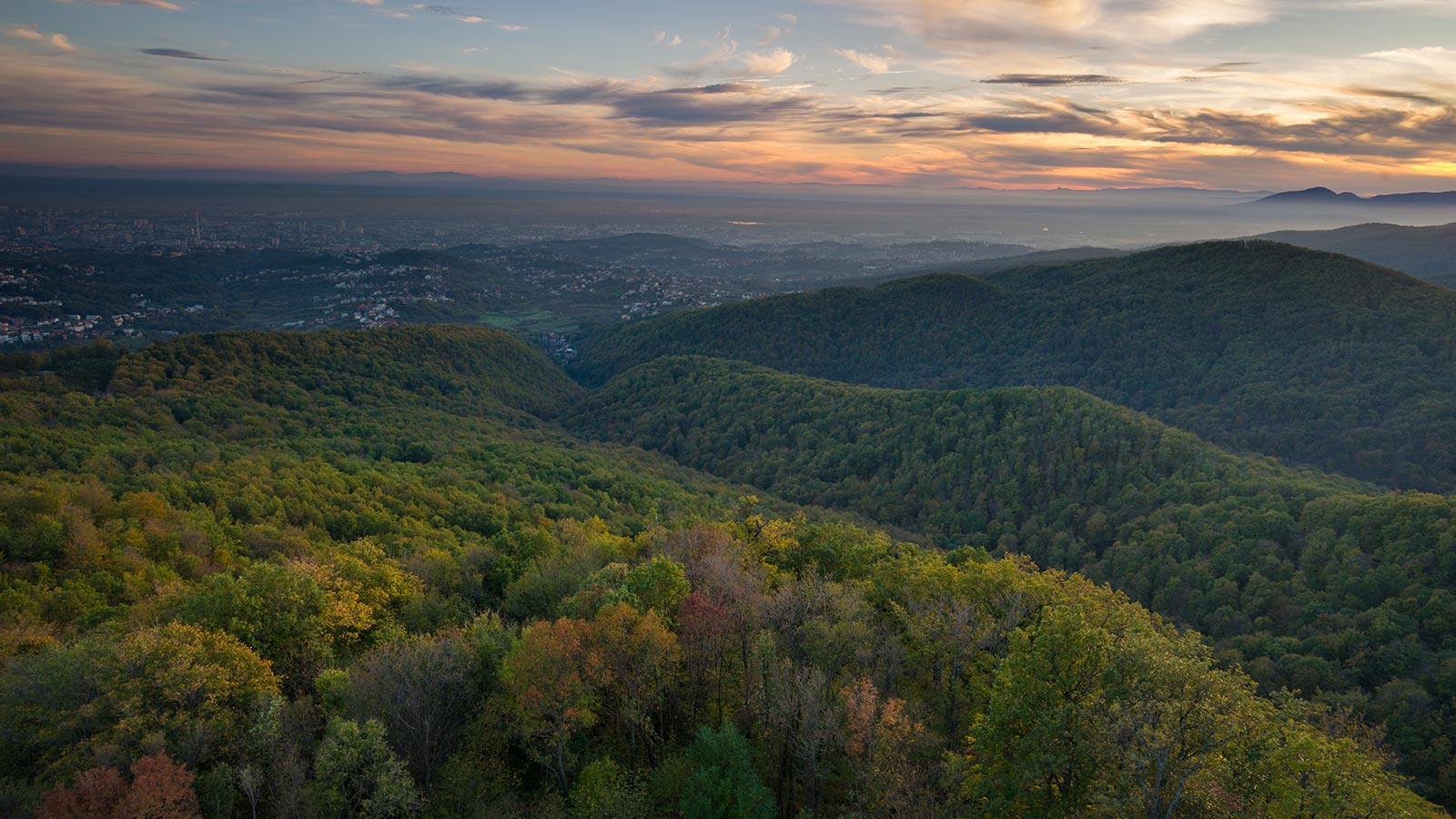 The Medvednica mountain overlooks Zagreb. On the other side lies Zagorje © Antun Cerovečki / Croatian National Tourist Board
The Medvednica mountain overlooks Zagreb. On the other side lies Zagorje © Antun Cerovečki / Croatian National Tourist Board
Oroslavje: The Gate of Croatian Zagorje (Vrata Hrvatskog zagorja)
The pretty town of Oroslavje is sometimes called The Gate of Croatian Zagorje (Vrata Hrvatskog zagorja). Though it lies less than 30 minutes drive from Zagreb, Oroslavje feels far from the bustle and pace of the metropolis. It's the kind of idyllic bolthole that Londoners dream of having half an hour from the English capital, a place where premium properties would be snapped up in an instant by the rich and famous. Such places and properties are rarely attainable in such close proximity to London. But, they are in Zagreb.
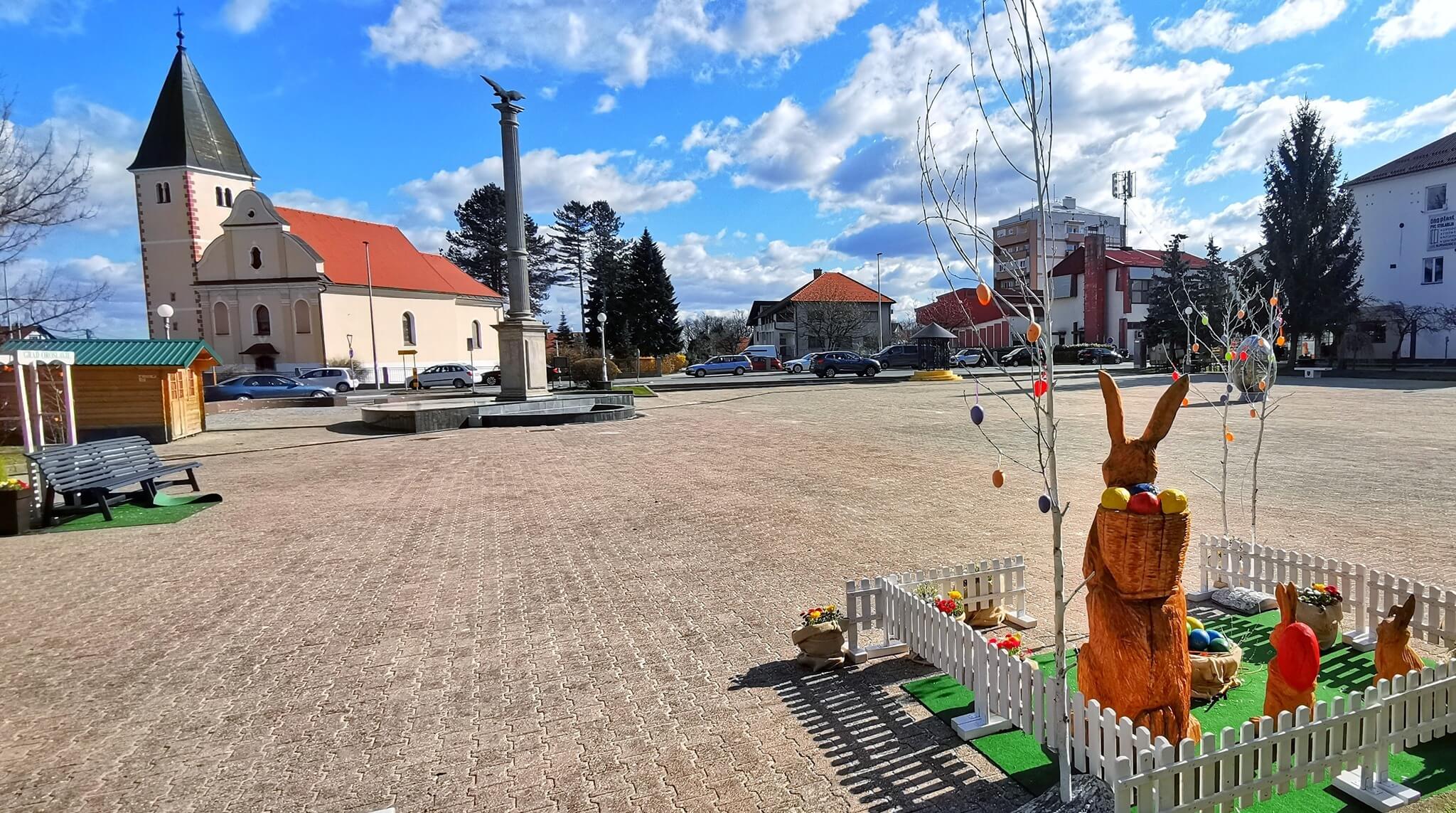 Oroslavje © Grad Oroslavje
Oroslavje © Grad Oroslavje
A bonafide 18th-century castle in Oroslavje has gone up for sale. Oroslavje Donji is a Baroque castle of 1,270 m2 with four wings, an inner courtyard and a park-sized garden that extends an incredible 26,235 m2. Although in a serious state of disrepair, it is an incredibly grand and historic building. The price tag is a cool 1 million Euros.
Opportunities to buy such dwellings do not come around so often. And, in a charming feature on the sale by zagreb.info, co-owners of the building are said to be hesitant about letting it go. Stunning pictures and details make that more than understandable.
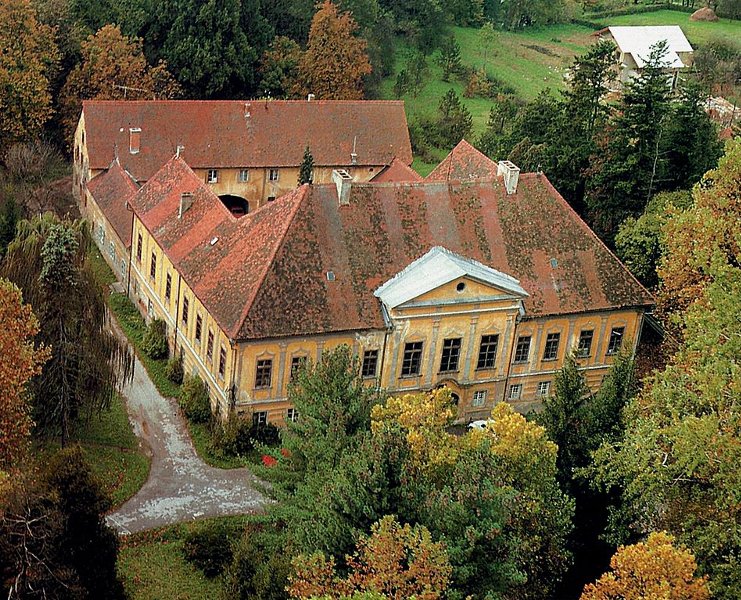 Oroslavje Donji © Njuskalo
Oroslavje Donji © Njuskalo
The first-floor vault of Oroslavje Donji's main hall holds beautiful wall paintings created in the late 18th century. Elsewhere, 19th-century wall paintings can be found, thankfully above the height of the spray paint graffiti left by some unauthorised visitors - the castle has been left abandoned for many years.
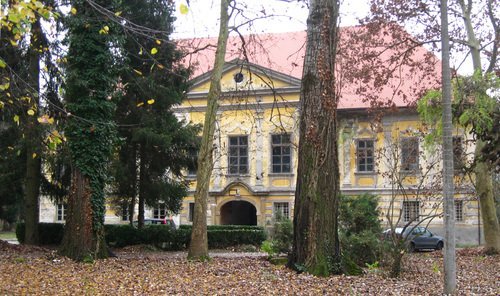 © Turistička zajednica grada Oroslavja
© Turistička zajednica grada Oroslavja
However, most of the building's major architectural details remain intact, as do ornate, original floor tilings. Outside, at the entrance to the park, there is a magnificent baroque portal. Two Baroque statues also lie within the garden which, in line with trends of the time, was furnished in the late 19th century with exotic trees from all over the world. Today, many species of birds make their home within the branches, undisturbed by human presence.
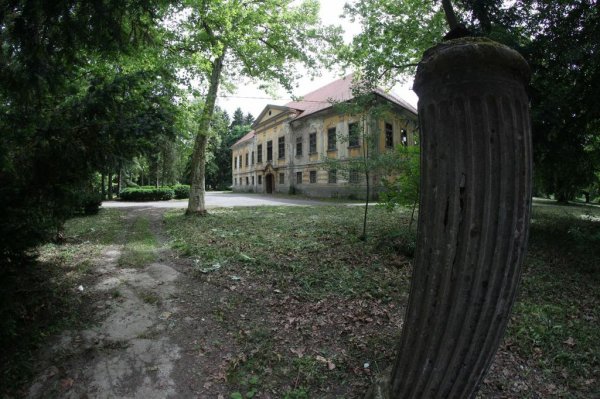 © Turistička zajednica grada Oroslavja
© Turistička zajednica grada Oroslavja
Well connected to Zagreb, Slovenia and Hungary, Oroslavje and other nearby towns were once favoured places to live by the upper echelons of Austro-Hungarian society. Oroslavje used to have two castles, but Gornje Oroslavje was almost completely destroyed by a fire in 1949. Oroslavje Donji was home to the Vojkffy family (Vojković in Croatian).
In a former life: The Vojkffy / Vojković family in Oroslavje Donji
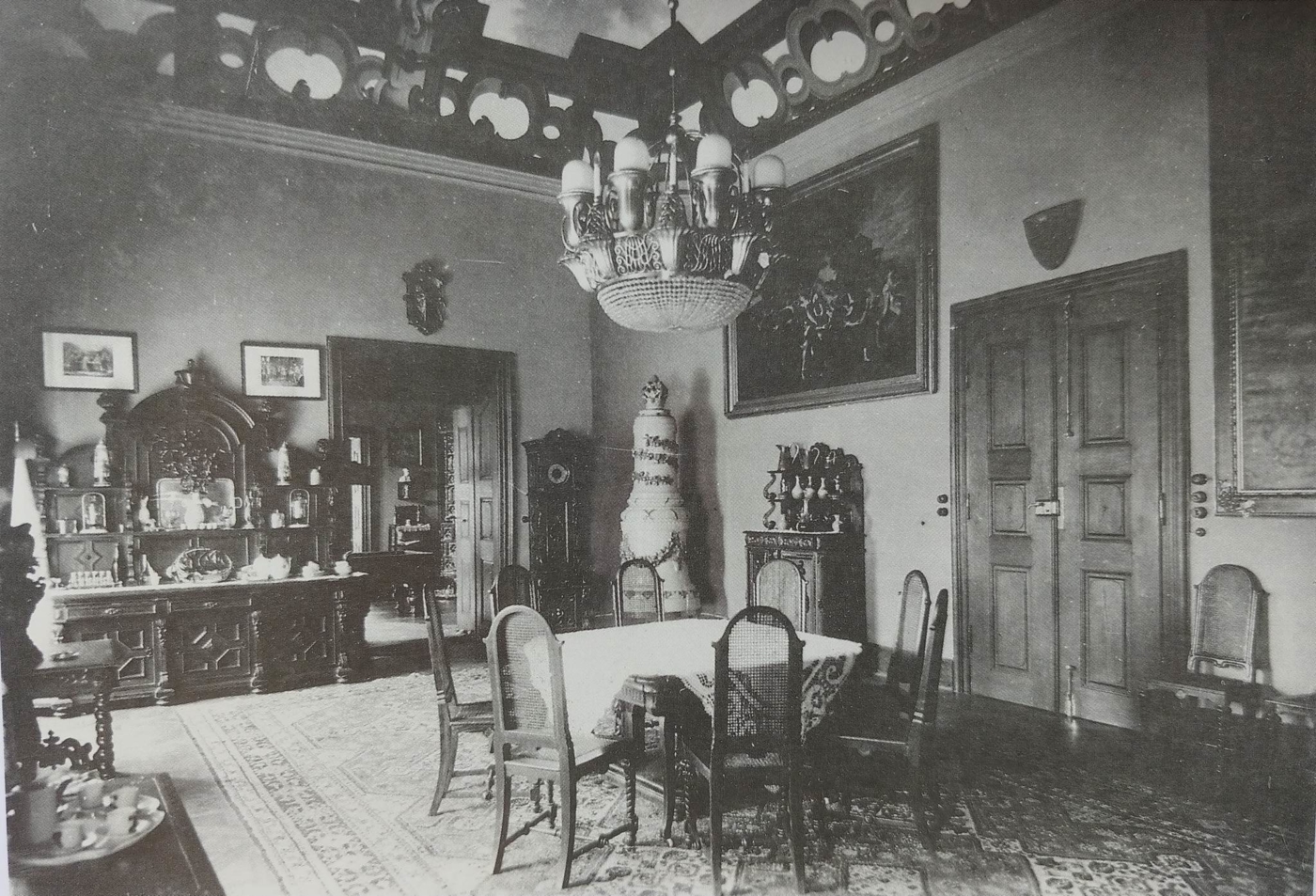 The inside of Oroslavje Donje when still inhabited © Faculty of Architecture University of Zagreb
The inside of Oroslavje Donje when still inhabited © Faculty of Architecture University of Zagreb
The family earned titles and lands for their service to the Austro-Hungarian empire in their struggle against the invading Ottomans. Ivan Vojkffy I (1520–1595) was the captain of the town of Karlovac, and his son Ivan Vojkffy II (1595–1661) captain of the town of Križevci. In the 17th century, the family moved to Hrvatsko Zagorje.
Sigismund Vojkffy was the royal chamberlain and commander of the guards at Schönbrunn Palace in Vienna during the reign of Empress Maria Theresa. For service in the Seven Years' War (1756–63), Maria Theresa awarded both Sigismund and his brother Christopher the title of count in 1763.
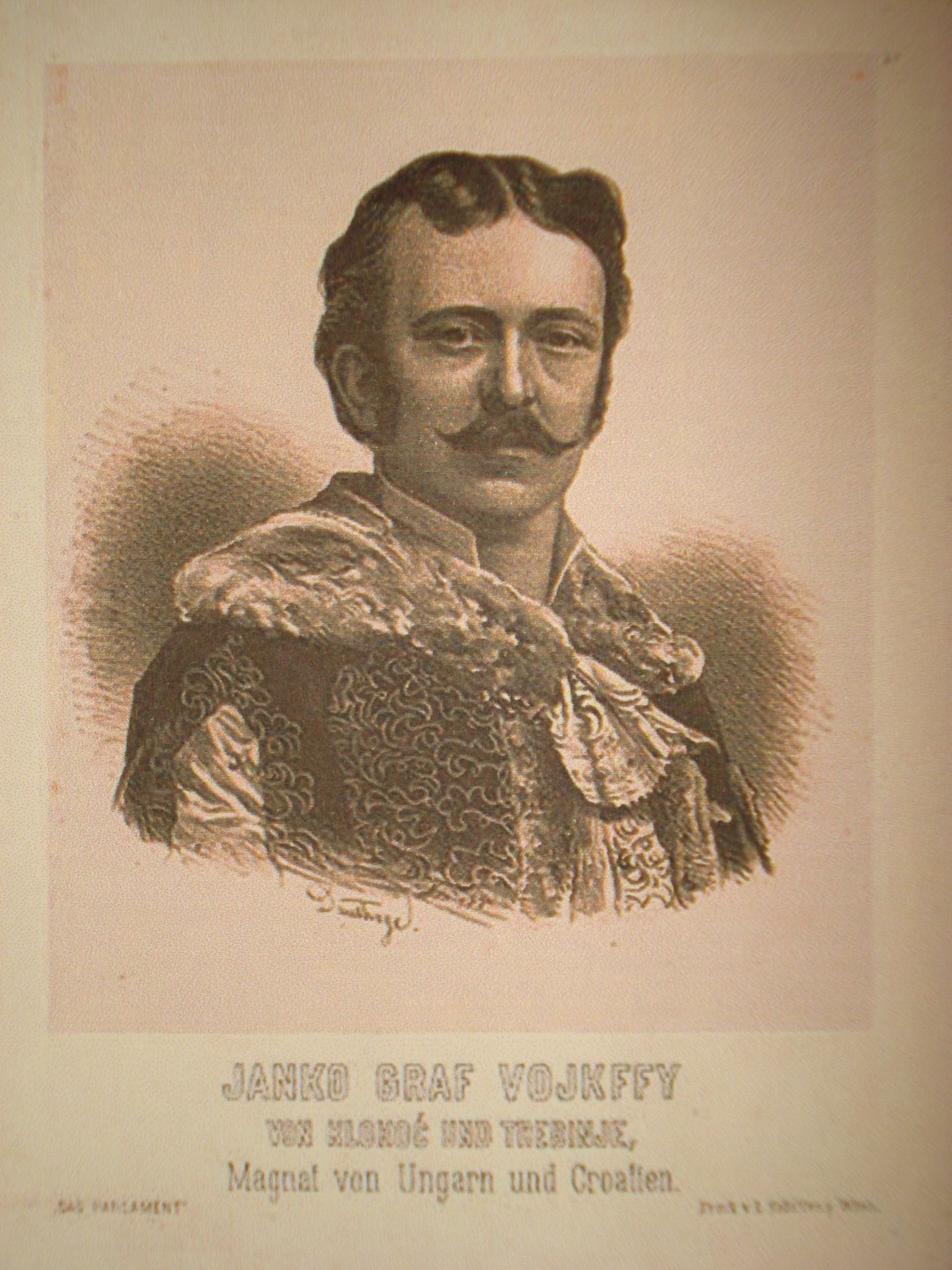 Janko Vojković, son of Sigismund. He lived at Oroslavje Donje © Silverije
Janko Vojković, son of Sigismund. He lived at Oroslavje Donje © Silverije
These were high decorations in the court of the empire. The family subsequently went on to build not only Oroslavje Donje (1770–90) but also the parish church of St. Jelena in Zabok (1782–1805) and several palaces in Zagreb's Upper Town, the most famous of which is the Baroque Vojković-Oršić-Rauch Palace in Matoševa Street. Sigismund Vojkffy died only two years after Oroslavje Donje was completed, but his descendants, including his son Janko, continued to live there.
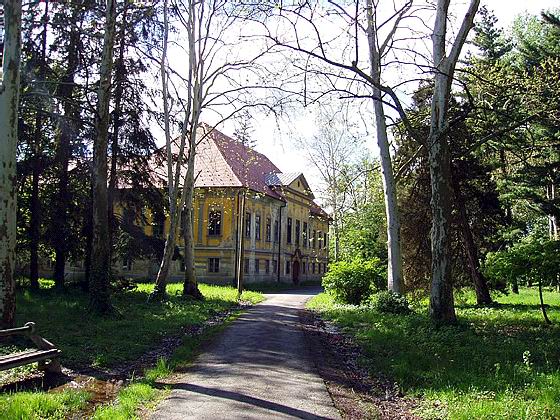 © Turistička zajednica grada Oroslavja
© Turistička zajednica grada Oroslavja
In its golden age, Oroslavje Donje held an approach that was 230 meters in length. In front of the south façade was a decorative garden, to the south-west the park was connected to the forest, and to the left of the approach was a spacious meadow. The last male descendants of the Vojkffy family, Sigismund's grandsons, emigrated from Croatia in the late 19th century. Thereafter, Oroslavje Donje changed hands a number of times before being confiscated by the state in the era of Yugoslavia and subsequently fell into disrepair.
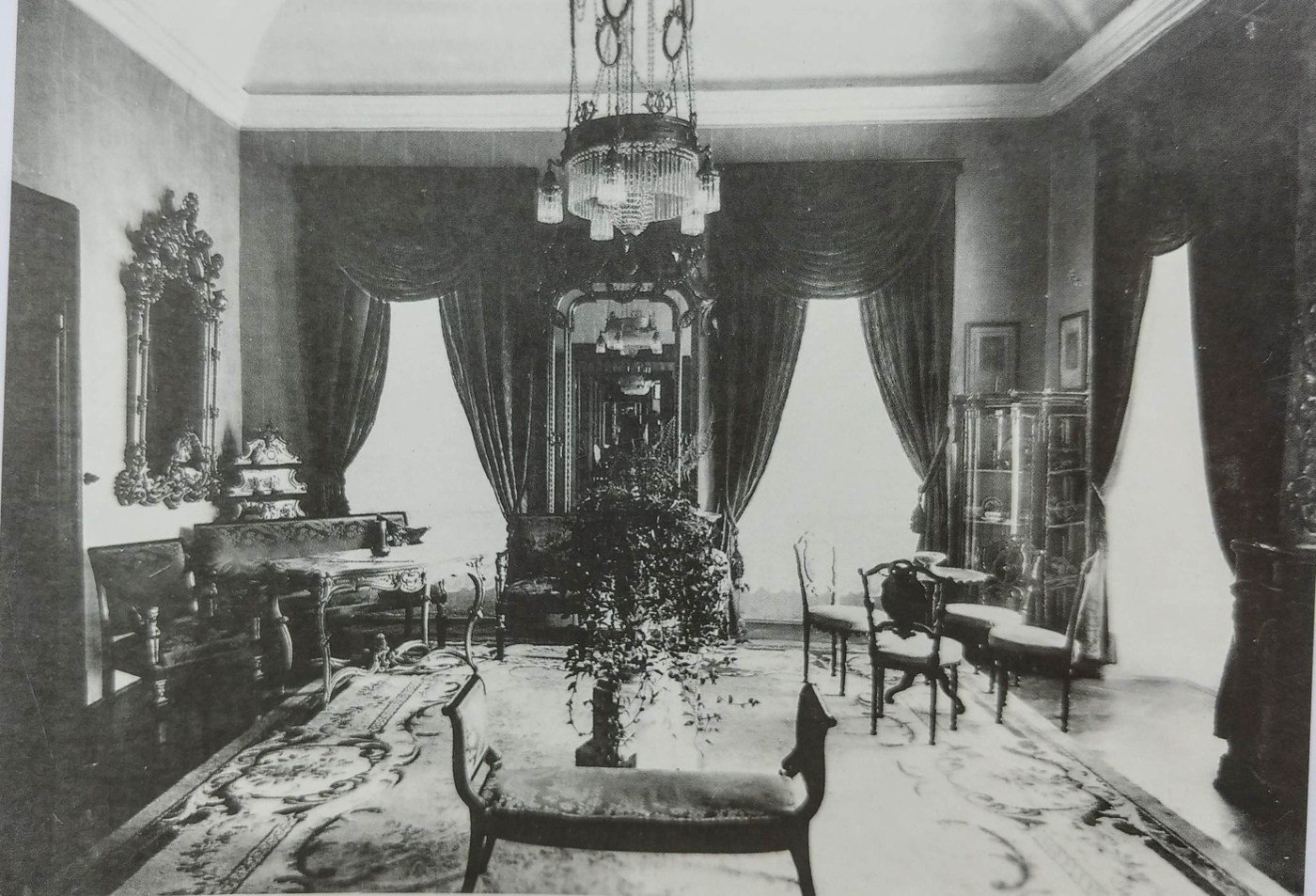 How the interior of Oroslavje Donje looked in its heyday © Faculty of Architecture University of Zagreb
How the interior of Oroslavje Donje looked in its heyday © Faculty of Architecture University of Zagreb
Though few properties like this appear on the market, there are surely a limited number of people who could afford the price tag. Even fewer who would have the funds and determination to restore Oroslavje Donje to its original state of grandeur. But, who knows? A buyer might appear. After all, who wouldn't want to live in a beautiful Baroque castle just 30 minutes from Zagreb?
If you want to read more about some of Croatia's best castles, then look here.
For the latest travel info, bookmark our main travel info article, which is updated daily.
Read the Croatian Travel Update in your language - now available in 24 languages.
OMCO Group: OMCO Croatia Takes Important Business Step
As Poslovni Dnevnik/Lucija Spiljak writes on the 6th of October, 2020, the Omco Group is a leading European company which is also one of the world's largest companies engaged in the production of tools for the production of glass packaging. In recent weeks, it successfully completed negotiations on the acquisition of its rival US company Ross International, and will take over its plants in Hungary and South Africa.
Darko Ranogajec, the director of Omca Croatia, which covers 50% of the parent group's production, explained that they are now in the takeover phase, which will end in mid-October, followed by the continuation of operations under their full control. The Omco Group has so far covered more than 20 percent of the world's needs.
''By taking over the company, we're increasing our capacities and expanding our presence on the African continent. This will increase our capacity by approximately 20%. Our goal was to expand onto a market that we would have a hard time conquering without taking over that company. Consolidation is also necessary so that we can deal with Chinese competition on an equal footing on the global market,'' said Ranogajec, adding that they are currently focusing on technological improvements in production in Hungary and South Africa, with the aim of integrating the two companies and exploiting synergies.
The benefits of the acquisition in which we take over the plants in Hungary and South Africa are important due to the pandemic that caused the market disruption. The takeover of the two group factories leads to a total of 2,200 employees in nine factories in eight countries.
''Our policy will be guided by large investments in technology and equipment, with the intention of stabilising the number of people with different approaches in different countries in line with the respective markets and the performance of individual factories. Our advantage now is that we have the ability to relocate production in our current locations flexibly and quickly, and we'll now expand that opportunity even further,'' said the director, who believes the benefits of the acquisition are important due to the ongoing global pandemic.
"Thanks to that and high competitiveness, we went through the crisis well and we expect a good business year. We're preparing for challenging future times, we believe that the economic consequences of the coronavirus crisis will continue next year and we have adjusted our plans, as well as this acquisition as part of that plan,'' concludes director Darko Ranogajec.
The Omco Group was recently awarded in the category of the best exporter to Belgium in 2019 with the Golden Key award, given by the Croatian Exporters Association. Today's Omco Croatia is the former Straza-Alatnica, which has been part of the system of the Omco Group from Belgium since 1997.
The Omco Group was nominated in three more categories - for the best exporter to the USA, the Russian Federation and Turkey. The Hum-based company employs about 750 people and exports about 98% of its products to all continents, and a large part is the supply of its own foundries within the group.
Two years ago, they recorded a profit of more than 43 million kuna, and last year they increased it by as much as 50%. Back in March, at the beginning of the lockdown, Ranogajec revealed that with strong foundations and a good market position, they were preparing investments worth around 40 million kuna this year, which were put aside by the coronavirus crisis.
The future of the company is tied to the future of the global glass industry, and the Omco Group is the largest factory of this type of production in the world, but they managed to survive in the middle of the previous lockdown, and even increase deliveries.
For the latest travel info, bookmark our main travel info article, which is updated daily.
Read the Croatian Travel Update in your language - now available in 24 languages
Continental Croatia Trains: Inland Opens Up With Green Travel
October 3, 2020 - With charter airlines in a state of flux and Croatia Railways beginning a renewal of their fleet in Slavonia, are continental Croatia trains the eco-friendly and best way to unlock the inland's amazing potential?
Everything changes. Nothing stays the same. Even before 2020 arrived, lifestyles and trends were headed in new directions. Eco-tourism and agro-tourism were two of the fastest-growing areas within the travel sector, this behaviour change a response to concerns about the environment. And nowhere in the country stands better poised to take advantage of this interest than continental Croatia.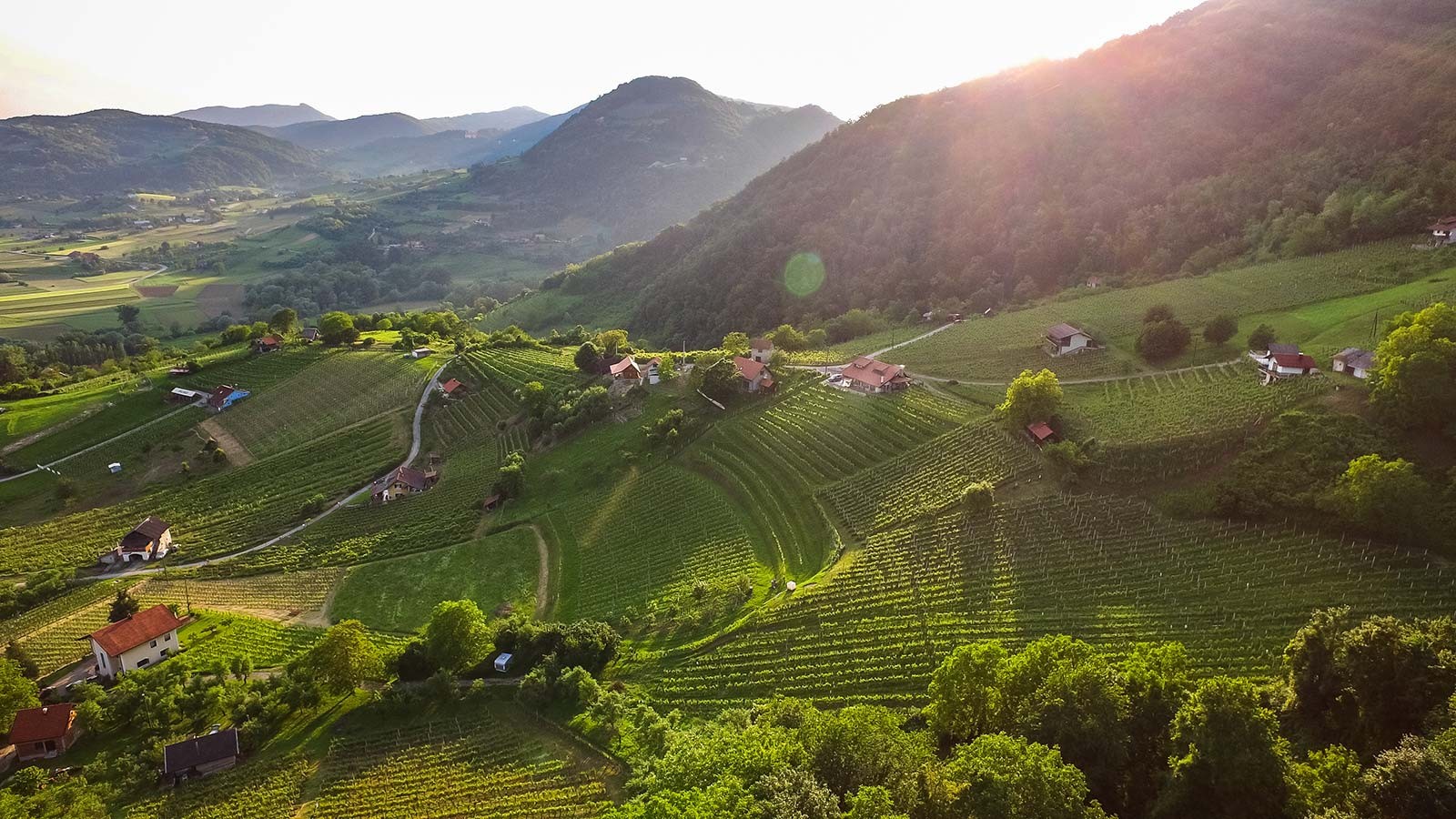 Impossibly pretty Zagorje - the region lies just north of Zagreb and is accessible by continental Croatia trains © Ivo Biocina / Croatia National Tourist Board
Impossibly pretty Zagorje - the region lies just north of Zagreb and is accessible by continental Croatia trains © Ivo Biocina / Croatia National Tourist Board
From the impossibly pretty hills of Zagorje, the peaceful rivers of Karlovac county and the hidden vineyards that surround the capital Zagreb to the vast Pannonian flatlands that stretch to Slavonia, Baranya, Vukovar-Srijem and beyond, the varied topography of continental Croatia is wild, exciting and - by many - wholly undiscovered.
This is land where agriculture and nature thrive side by side, where the stresses of modern-day existence ebb away as you readjust to a way of life that would look mostly familiar to the people who lived here centuries ago. These are places where you can truly be at one with yourself and with your surroundings. In continental Croatia, you often find yourself in an environment that is both timeless and traditional, yet wholly contemporary in regards to its ecological aspirations. And you're never far away from an exciting city environment that you can dip into on a whim – not just Zagreb, but Osijek, Slavonski Brod, Karlovac, Sisak and Varaždin too.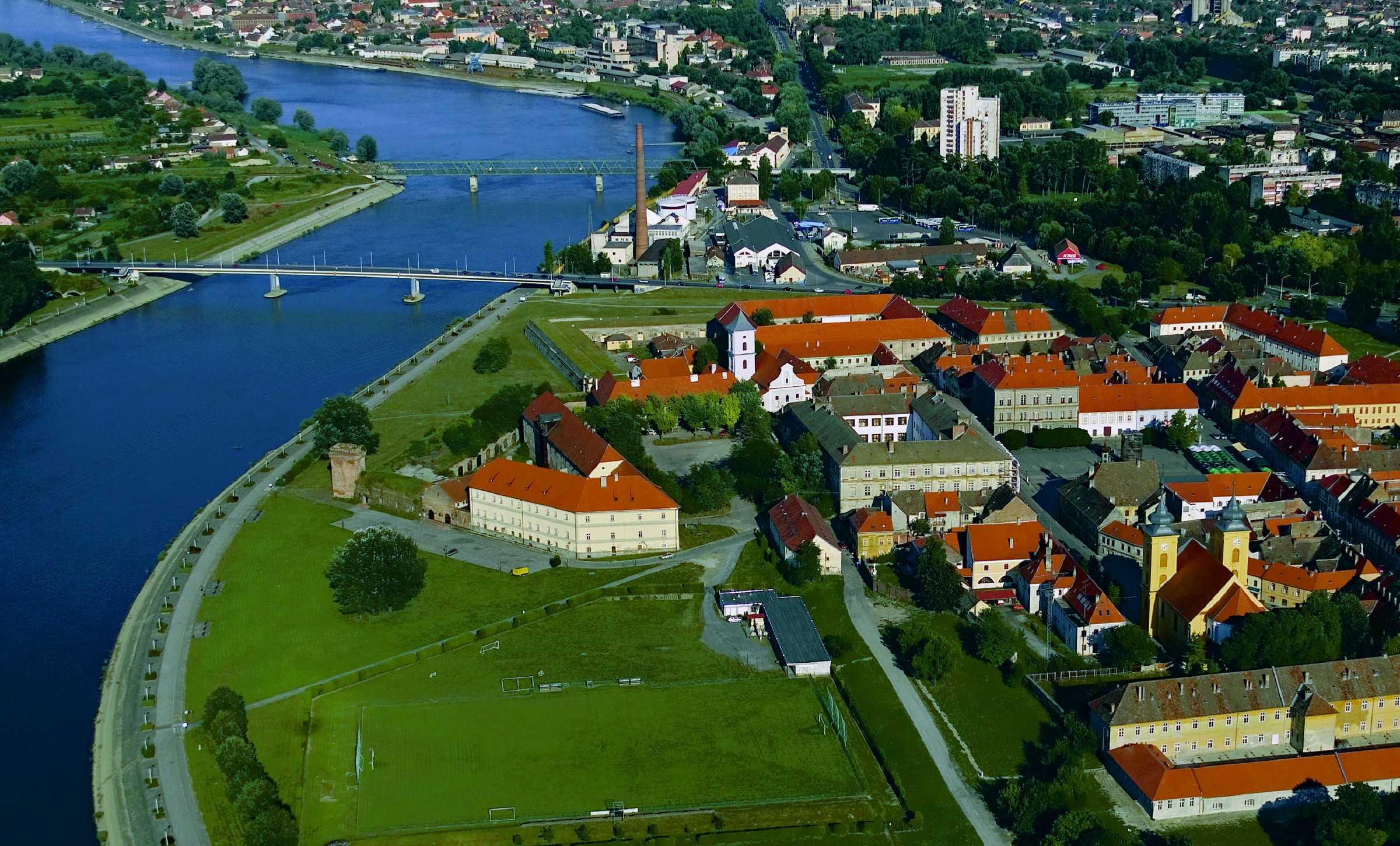 To those who really know and love Croatia, Osijek is simply unmissable. It is both the capital of and the doorway to Slavonia and Baranya and should be more accessible by continental Croatia trains. Sadly, international transportation links to the city by air are also quite poor. Improvements in accessibility to Slavonia and Baranya by rail and road are imminent © Romulić & Stojčić
To those who really know and love Croatia, Osijek is simply unmissable. It is both the capital of and the doorway to Slavonia and Baranya and should be more accessible by continental Croatia trains. Sadly, international transportation links to the city by air are also quite poor. Improvements in accessibility to Slavonia and Baranya by rail and road are imminent © Romulić & Stojčić
Unlocking the incredible potential of continental Croatia relies on getting the message out there and facilitating travel to these regions
In recent TCN features we have detailed that motorways within Croatia are among the best in Europe - once you're inside Croatia, travelling by car (or bus) between the regions couldn't be easier. We have also seen evidence of the huge interest in travelling here by rail and using continental Croatia trains.
Of all the modern methods of long-distance travel, rail is by far the most eco-friendly. What better way to begin an environmentally friendly holiday than by arriving on continental Croatia trains? When the country wisely decided to prioritise its internal motorway system, a modern and fast inter-regional rail network was put on the back burner. Nowhere suffers greater from this decision than continental Croatia.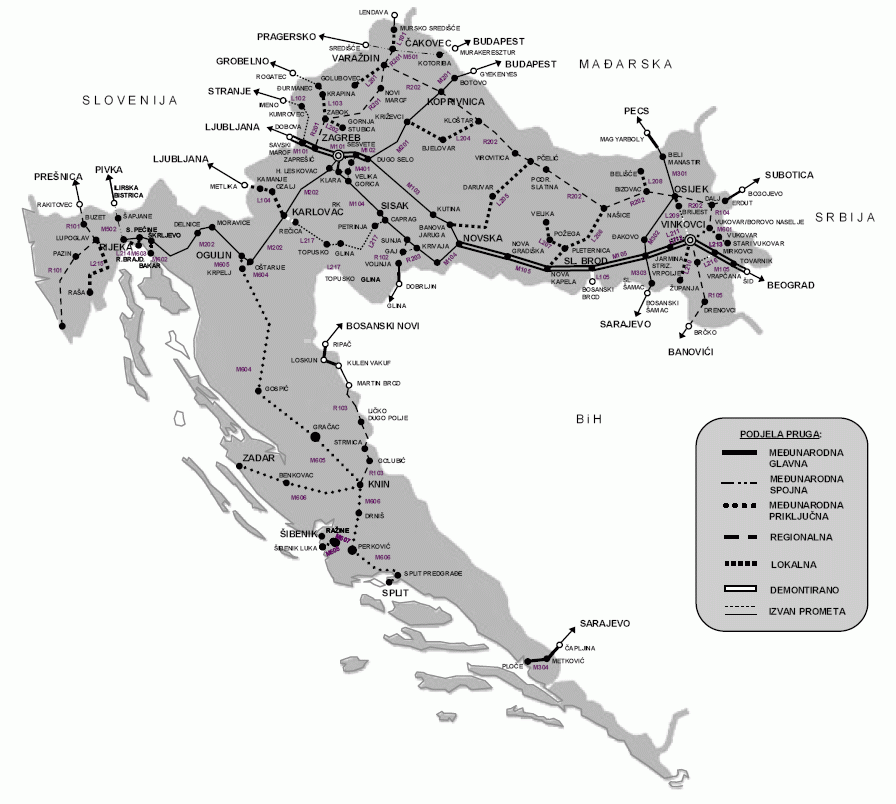 The Croatian rail network © Croatian Official Document uploaded to Wikipedia by Epepe
The Croatian rail network © Croatian Official Document uploaded to Wikipedia by Epepe
The only high-speed line that currently exists in Croatia links Rijeka to Budapest, via Zagreb and Koprivnica. Planned improvements hope to cut journey times between Zagreb and its nearest coastal city to an hour. Same as it ever was - Rijeka was the first Croatian city to be connected internationally by rail. That line also ran into the heart of Austro-Hungary and facilitated upper-class travel to places like Opatija. But does it best benefit the country to invest in more links to the coast or in continental Croatia trains? Well, the inland is not being ignored. Upgrades are being made to continental Croatia trains.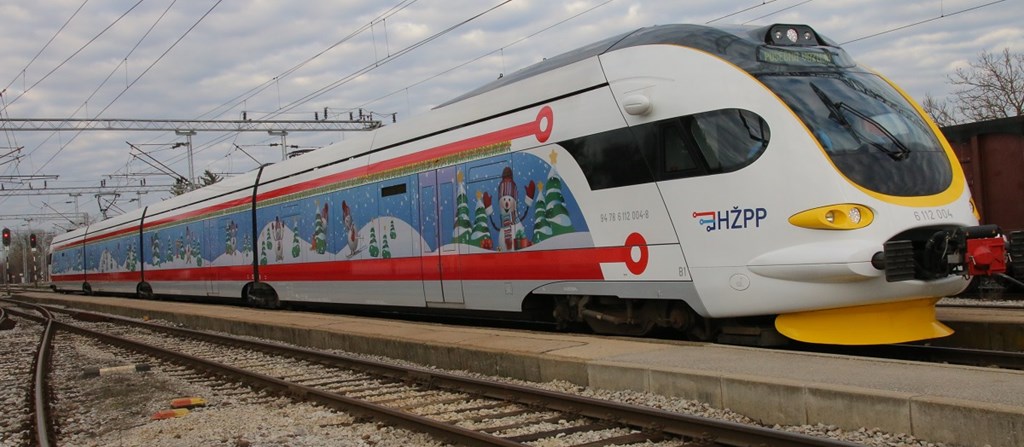 This impressive beast actually services the country's coast. But would more investment in the continental Croatia trains network better service more people and help unlock the inland to tourists? Around 70% of the country's inhabitants live in continental Croatia © HŽPP
This impressive beast actually services the country's coast. But would more investment in the continental Croatia trains network better service more people and help unlock the inland to tourists? Around 70% of the country's inhabitants live in continental Croatia © HŽPP
The rail link between Zagreb and Slavonski Brod is so historic that it was once part of the four routes of the Orient Express. It has been maintained to a standard where you can make a relatively quick journey from the capital to Vinkovci via Slavonski Brod. The same cannot be said for rail travel to Osijek, the access point to Baranya and much more. So slow is the connection between Osijek and Zagreb that it has been possible over recent times to reach the Slavonian capital quicker by taking the train to Vinkovci, then the bus to Osijek, rather than travelling direct by rail.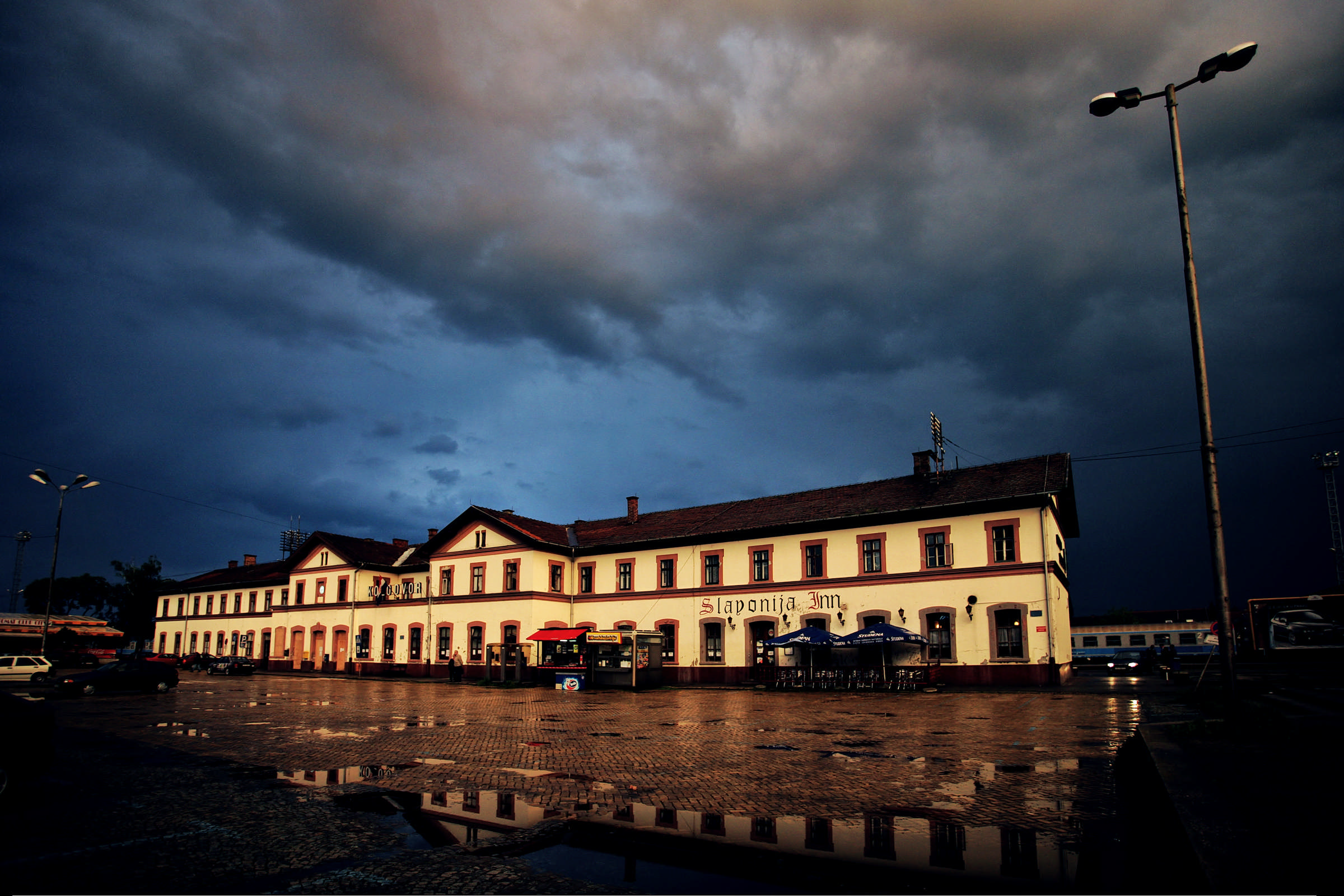 Osijek train station. A renovation to the building is planned for the near future © Romulić & Stojčić
Osijek train station. A renovation to the building is planned for the near future © Romulić & Stojčić
However, in February this year, Croatian Railways introduced four direct daily lines between Slavonski Brod and Osijek. And there will be a new tilting train line that will run between Zagreb to Osijek on Friday afternoon and from Osijek to Zagreb on Sunday afternoon, facilitating student travel. On October 15, the first low-floor train will run between Osijek and Vinkovci as an additional part of the renewal of their continental Croatia trains fleet in Slavonia. The welcome return of Croatia's second-oldest international rail line - linking Osijek to Pécs in Hungary, via Beli Manastir and Baranya - was introduced in late 2018.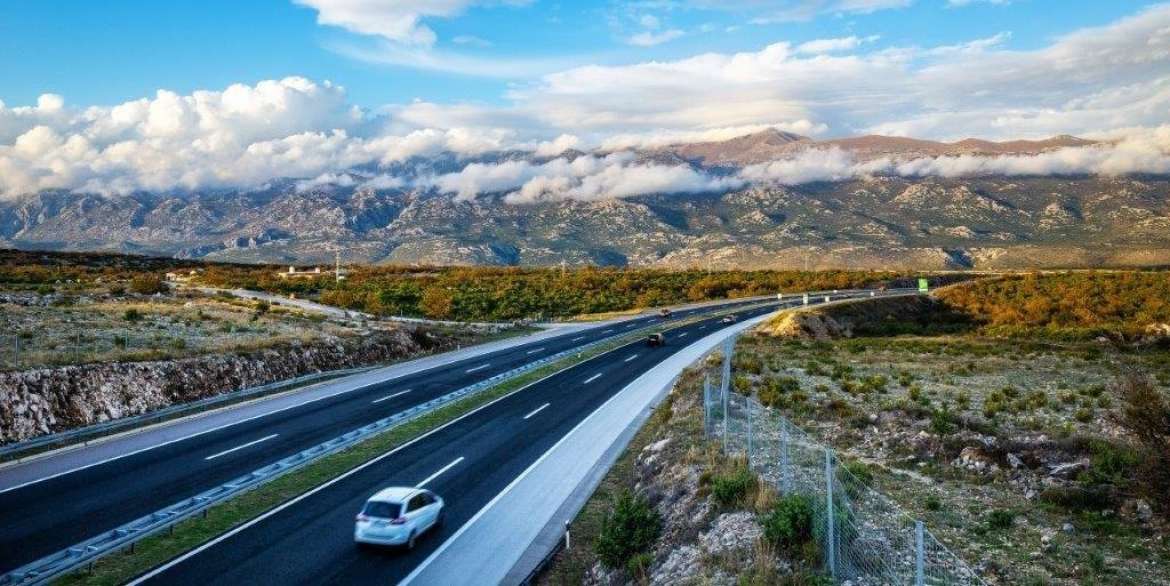 A motorway stretch between Metković and Dubrovnik, integrating the Pelješac bridge and the Croatian segment of the European corridor are the final big remaining projects in a three-decade-long undertaking to give Croatia one of the best motorway networks in Europe. Should Croatia's rail network be next? © Hrvatske Autoceste
A motorway stretch between Metković and Dubrovnik, integrating the Pelješac bridge and the Croatian segment of the European corridor are the final big remaining projects in a three-decade-long undertaking to give Croatia one of the best motorway networks in Europe. Should Croatia's rail network be next? © Hrvatske Autoceste
Access to Slavonia and Baranya will also be massively facilitated upon completion of the European corridor, which will connect North Europe to the Adriatic. Starting in Budapest, it necessitates the building of a bridge near Beli Manastir. Thereafter the motorway will pass by Osijek, connect to the Zagreb-Slavonia motorway near Lipovac, then pass through Bosnia and its capital Sarajevo and on to Ploče.
The removal of budget airline flights to the airport in Osijek remains a hindrance to attracting many international visitors to Slavonia and Baranya. However, with charter airlines facing the greatest uncertainty of all modes of transport at the current time, though their return is a must, it is perhaps now an ambition that should remain more long term. For the immediate future, improvements to rail travel look to be a brilliant way of opening up not only Slavonia, Baranya and Vukovar-Srijem, but also an eco-friendly access point capable of serving the whole of untapped continental Croatia.
For the latest travel info, bookmark our main travel info article, which is updated daily.
Read the Croatian Travel Update in your language - now available in 24 languages
Original and Promising: the Future Bicycle Path Next to the Zagorje Train Tracks
March 1, 2020 - Dražen Breitenfeld, a bicycle enthusiast who writes a cycling blog for tportal pedalled along the newly-reconstructed train tracks from Zaprešić to Zabok, where the future bicycle path should be.
Many of the nicest bike paths in Europe are related to the railroads in one way or another, Breitenfeld writes. The path he visited, which should soon become even more accessible to those on two wheels, starts in Zaprešić, and mostly follows the existing tracks to Zabok. To make the route more interesting, some of the already existing roads or village paths will be used in the bike path. The Krapina River has a small embankment, which can also be used to create a pleasant bicycle path on it. However, most of the path will be near the tracks, and since it's been recently renewed, all of the infrastructure the bikers need should be available to them. Train stations where it's going to be possible to board the train with your bike, restaurants and bars at or near those stations, many service roads etc.
If you want to make that trip these days, it's not impossible but the author says that you need to have a mountain bike, as the roads are not in the best of the conditions, and you should have reliable GPS device because at certain points it will help you find your way. Breitenfeld proposes that the entire length of the bicycle path be covered with asphalt, which is the idea I'm sure many nature and cycling lovers will find appalling. But, creating a pleasant path to Zabok will help take many weekend bike enthusiasts over the first 25 kilometres, and from there it'd be easy for them to continue exploring Zagorje: either go towards Tuheljske Toplice, the area around Sutla River, and even further, towards Sv. Križ and Krapina. Many of the tourist gems of Zagorje, castles, spas, restaurants, all of them would become more accessible and would attract many day tourists. Those who would use the path for serious training would make the 25 kilometres in an hour or so, but many cyclists prefer going slower, but enjoying the surroundings, explore, have a cup of coffee, a lunch, a piece of cake or a glass of wine - all of which can be found on this route. And you would be able to take the train home if you spent too much time in Zagorje or are too tired to bike back.
The coordinating body for cycling tourism with the Tourism Ministry has already scouted the possible bicycle path route, along with the people from Croatian Railways and towns Zaprešić and Zabok. This is the first necessary step of the project, which seems to attract a lot of support. And if you've ridden your bicycle in the area you might wonder how you'll be able to get to Zaprešić, as it's really no pleasant way to get on your bike from Zagreb to Zaprešić. There are two solutions, one already present, one in the works: there is a train going to Zaprešić from Zagreb and coming back, operating every 45 minutes or so. The proposed solution is creating a bicycle corridor from Zaprešić to the Medsave ferry-boat (which is worth a visit on its own!), which would allow the cyclists to return to Zagreb by the lakes south of the Sava River.
Hopefully, we'll be able to go to Zagorje on a charming bicycle path along the Zaprešić - Zabok railroad tracks. Not many people in Croatia appreciate the nature still around us enough, and how easily accessible it really is - and we should work hard at trying to make it more accessible for everyone to enjoy.
Read more in out Lifestyle section.
Who Parked an Airplane in Zagorje?
Walking around Zagorje, a region of Croatia to the North of Zagreb, you can expect to find many things, but an airplane in Zagorje, parked in a backyard - well, that's new...
Robert Sedlar from Zabok says that it was a great dream of his, to get his airplane, 24sata reports, and this Monday he succeeded when a Fokker-100, an airplane that used to be owned by Trade Air company, found its way to his backyard in Strmec Stubički. Robert says that he had been an airplane enthusiast since he was a kid and now he has managed to purchase one for himself, to restore and put back together.
The Fokker-100 was made in the Netherlands in 1991 and used to hold 109 passengers and four crew members. It flew for four different companies, Indonesian, Mexican, Brasilian, and finally the Croatian Trade Air. Robert explains that he had wanted to buy an airplane for a while and that he asked the owner of Trade Air to help him procure an airplane that has been decommissioned.
He immediately told Sedlar about the aircraft he donated to Osijek Airport, where it had been sitting since 2014. The airport wanted to turn it into a restaurant but gave up on the idea, so he purchased it from Osijek Airport.
It took him and some of his friends six weeks to take it apart in Osijek before they could even consider taking it to Zagorje, which is a 330 kilometre route. They measured each section of the road to make sure it was possible. The fuselage, the body of the plane, was the critical part, and it got transported on a flatbed trailer. All in all, the vehicle was 36 metres long. He admits that he was very anxious in anticipation to see if everything would go as planned. Now that the airplane is safely in his back yard, he can relax a bit, but also make plans for putting the airplane back together and then working on redesigning it.
The redesigning and repurposing plans are impressive: he plans to put a swimming pool (five by five metres) on the right wing, and there will be a go-cart track around the airplane. That will make the airplane attractive for children's birthday parties, but other types of celebrations as well, such as bachelor parties or grown-up birthdays. He plans to install two flight simulators in the cockpit, which will make the simulations very realistic.
The opening party for the entertaining airplane in Zagorje is planned for early March, and after that, many parties will be taking off in an airplane in Zagorje (excuse the pun!).
Mlinci from Zagorje Protected as Original Croatian Product on EU Market
Mlinci from Zagorje is the 23rd Croatian product to be entered in the Register of Protected Designations of Origin and Protected Geographical Indications, the European Commission announced on Tuesday.
Index.hr reports on June 25, 2019, that mlinci from Zagorje is a bakery product made of the smooth wheat flour type 550, water and salt, which is then rolled and manually stretched into a 2.5 mm thick dough, cut into rectangular pieces and baked in two stages - on heating plates and dried to completion.
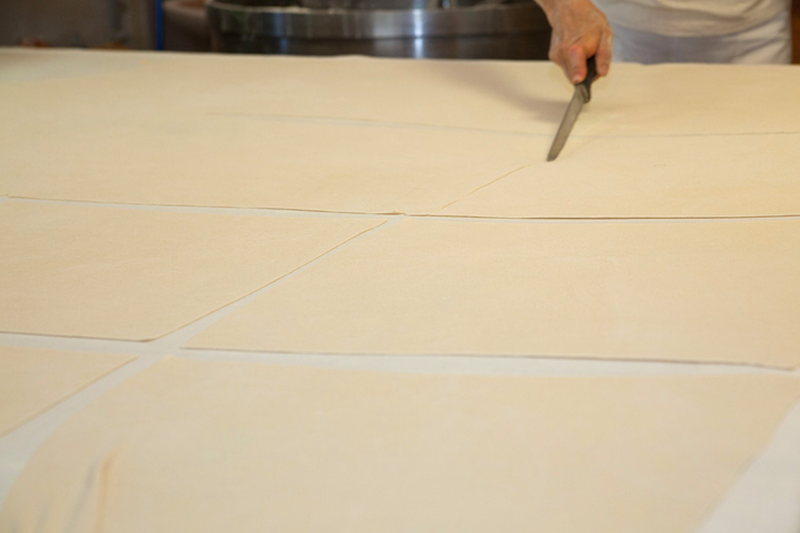
Mlin Goričk
The finished product is a thin, dried flatbread ranging in a color from white to yellow. It is mostly flat with lightly raised brown bubbles that form from baking.
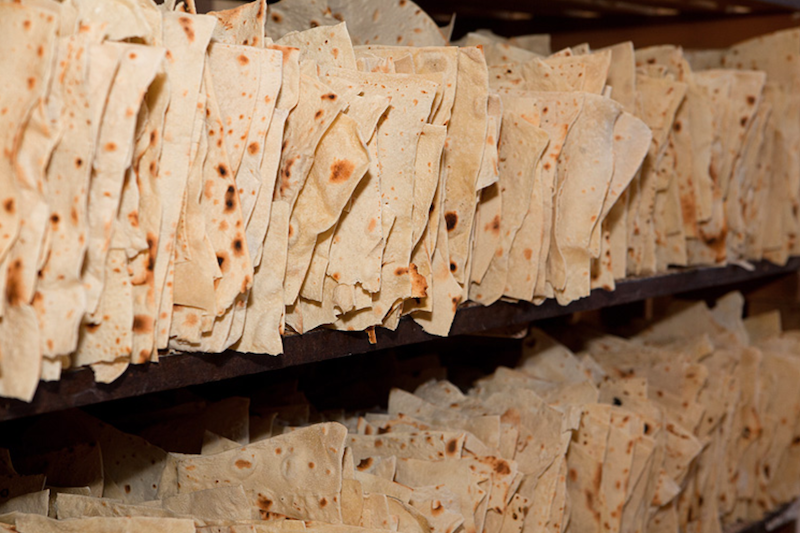
Mlin Goričk
The geographical area of the production of Zagorje mlinci covers the area of Hrvatsko Zagorje, i.e., the whole area of Krapina-Zagorje County, the whole area of Varaždin County and the border sections of Zagreb County with Krapina-Zagorje and Varaždin County.
European Quality Labels, or protected designation of origin, protected geographical indication or protected designation of traditional specialty, are designated as products that are protected as such throughout the European Union and are produced following the specifications of the products defined by the manufacturers themselves.
The European seal on the packaging next to the product name is a guarantee of the original product. Thus, it guarantees you are purchasing authentic and controlled products, recognized by the quality and local origin.
The ‘designation of origin’ label refers to a product originating from a particular place, or region. In exceptional cases, this could also include a country whose quality or characteristics are essential or exclusively under the influence of specific natural and human factors of a particular geographical environment and all stages of production take place in a specific geographic area.
The ‘geographical indication’ refers to a product originating from a particular place, region or state whose quality, reputation or other attributes is credited to its geographical origin and whose at least one stage of production takes place in a particular geographical area.
Both labels are related to the geographic area where the product is produced. For the ‘designation of origin’, the applicants must highlight the quality of the product to other similar products and all stages of production must be within the defined geographical area. For the ‘geographical indication’, it is important to prove the reputation and tradition that the product and the name have, and the stage of production that contributes to the main characteristic of the product must take place in the defined geographical area.
To read more about lifestyle in Croatia, follow TCN’s dedicated page.
Most Successful Croatian Company Coming to Veliko Trgovišće
Veliko Trgovišće is a little place in the continental Croatian county of Krapina-Zagorje. If it wasn't for independent Croatia's very first president Franjo Tuđman having been born there, it would certainly be even less known than it is now, as this unassuming little Zagorje municipality has a mere 5,000 inhabitants and is very rarely talked about in the media.
As Poslovni Dnevnik writes on the 15th of May, 2019, RTL Direct went directly to this small municipality to try and see just what it has to offer. They found out that Veliko Trgovišće is no stranger to the production of tablecloths, napkins and linens which travel from Veliko Trgovišće to London restaurants and even to Las Vegas casinos.
Finka has been working there for 37 years and she's one of eighty people working in this village's textile factory, and she states that people in Zagorje will ''never remain hungry'' when discussing what it's like to live in this very rural and little known part of Zagorje.
That same factory moved ten years ago from the Croatian capital of Zagreb, taking part of its workers with it.
"The Trgovišće Factory is the largest garment manufacturer, it exports to 25 countries all over the world, from England and Switzerland, to exotic destinations like Dubai,'' stated Dražen Kolarek, finance manager at the factory.
Mate Rimac and his company, otherwise one of the most successful companies in the whole of Croatia, Rimac Automobili, is also on his way to this little Croatian county, and you can read his entire interview here.
This Croatian municipality has a few successful businesses, unemployment there is at less than an enviable three percent, the first Croatian president was born there, and they also want the status of a city there. That ''city'' status will likely be obtained because, as Veliko Trgovišće's Robert Greblički has already stated, this little Croatian municipality meets all of the necessary prerequisites.
"The first president was born here, we're raising the number of people living here, we're developing entrepreneurship, so I think that we can copy Sveta Nedjela in time," Greblički added.
As soon as this completely unassuming little Croatian municipality gains its city status, it can truly become, as its name suggests: Big (Veliko).
Make sure to stay up to date by following our dedicated business page for much more on Croatian business, Croatian companies and Croatian manufacturing.
A Fairy Tale in the Palm of Your Hand: Zagorje Releases Stunning New Promo Video
Krapina-Zagorje County published a new promotional video that aims to present the most successful tourist destination of continental Croatia to the highest possible number of potential guests, reports HRTurizam on April 12, 2019.
The "Fairy Tale" tourist campaign, as the new video is also called, has already helped bring excellent results to the area. Namely, last year, 159,200 arrivals and 349,000 overnight stays were recorded in Krapina-Zagorje County, which is an increase of over 12 percent in arrivals and 7 percent in overnights compared to 2017.
“The most important markets are Slovenia, Germany, Poland, Bosnia and Herzegovina, Italy and Austria. With new promotional tourist videos and all other promotional activities in Zagorje we want to attract couples, families with children and tourists looking for a destination where, through history, culture, art, gastronomy, thermal baths and bays, they can experience modern, active holidays in a traditional environment,” said Sanja Skrinar, head of the Tourist Board of Krapina-Zagorje County.
Željko Kolar, the prefect of Krapina-Zagorje County, highlighted the tourism success of the area.
"We have come to a level where we are the best - we are the best destination for continental tourism in Croatia. Now is the right time to brand per sector. We will have our main brand - our ‘Fairy Tale in the palm of your hand’, and we will break it out in some subcategories so that the promotion of the destination can be brought to another level."
In recent years, the county has invested quite a lot of resources into tourist infrastructure. A new campsite opened in Terme Jezerčica, and a hostel in Desinić. A new hotel is being built in Krapinske Toplice, in Zabok the Gjalski castle is being renovated, and in Stubičke Toplice, they will soon begin restoring the hotel Matija Gubec and the cult hotel Slamarice. The opening of new accommodation facilities is underway with the creation of new tourist facilities and attractions. In Krapinske Toplice, guests can try the simulation of a helicopter ride at the Heli Center Toplice, and in Oroslavje they can walk through the Science Park, ride quads or fly a hot air balloon above Zagorje.
The promotional video was filmed by director Jasenka Haleuš and produced by Krijas.
"The four-minute movie that has a shorter version was filmed last summer in over thirty locations - from those most famous such as Veliki Tabor, the Krapina Neanderthal Museum and Marija Bistrica, through untouched nature to newly discovered locations including Bedekovčanska Lake and the old-timer museum Presečki. The film also used sixty-four people, the people of Zagorje in love with their Zagorje,” Haleuš pointed out.
The great potential of Zagorje in the frame of Europe is the medicinal thermal waters that favor the development and strengthening of health tourism, one of the fastest growing tourist branches in Croatia. This fact prompted Zagorje health and tourism workers to establish a cluster of Zagorje, whose common goal is to create a recognizable health-tourism product.
To read more about travel in Croatia, follow TCN’s dedicated page.
Learn the 10 Commandments of Dalmatia... and Zagorje
March 21, 2019 - A little Croatian humour looking at some regional stereotypes - do you know the 10 commandments of Dalmatia and Zagorje?
I heard a joke in the pub in Germany a few years ago that made me laugh out loud.I heard a joke in the pub in Germany a few years ago that made me laugh out loud.
"What is the most precious and rarest liquid in the world?"
"Dalmatian sweat."
Which leads, of course, to stereotypes - are Dalmatians really lazy?
As I explained in an article on the subject 4 years ago (Are Dalmatians Really Lazy?), some of the hard-working people I have ever met are Dalmatian. As are some of the laziest.
But stereotypes are stereotypes, and they are often best reflected with humour. I realised this morning that in all my 8 years of writing about Dalmatia, I have never published the 10 Dalmatian Commandments. Author unknown and available in various places online, including Romwell.
10 Dalmatian Commandments
'10 Dalmatinskih Zapovjedi'
1. Covik se rodi umoran i zivi da se odmori.
Man is born exhausted and lives to rest.
2. Jubi posteju svoju ka samoga sebe.
Love thy bed as thyself.
3. Odmaraj se danju da nocu mozes spavati.
Rest during the day that you may sleep well at night.
4. Ne radi, rad ubija.
Do nothing, work kills.
5. Kad vidis nekoga da se odmara, pomozi mu.
When you see someone resting, help them.
6. Ne cini danas ono sto mozes sutra.
Do not do today what you can do tomorrow.
7. Radi manje nego mozes, a ono sto mozes prebaci na drugoga.
Work less than you can, and re-delegate everything you can.
8. U ladu je spas, od odmaranja niko nije umra.
Salvation is in a shade, nobody dies resting.
9. Rad donosi bolest, ne umri mlad.
Work brings infirmity, do not die young.
10. Kad pozelis radit, sidi, pricekaj, vidit ces da ce te proc.
When you feel like working, just wait a bit, it will pass.
author unknown
And it is not just Dalmatia which has its own 10 commandments, as I discovered when I moved north to Varazdin County a couple of years ago, where I learned the Zagorje Commandments. Over a gemist or three, of course.
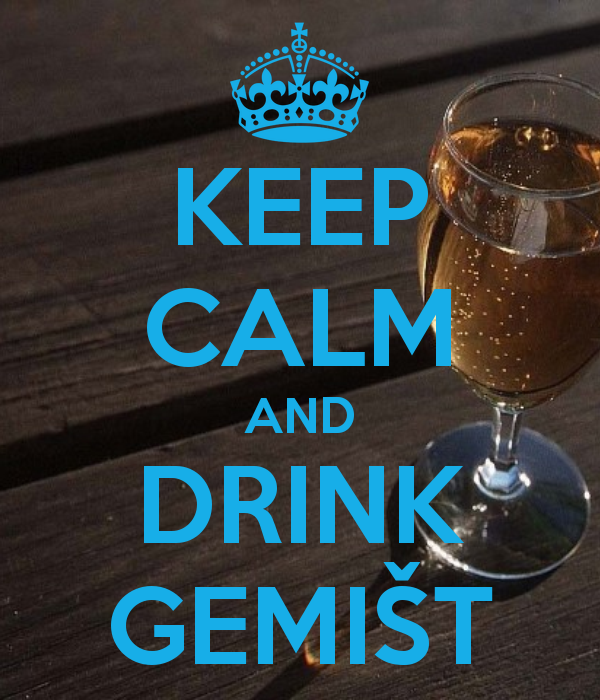
10 Zagorje Commandments
10 Zagorskih Zapovedi'
1. Tuzi bliznjeg suseda da on ne bi tebe.
Sue thy nearest neighbor, lest he sue you.
2. Ak' susedu crkne krava, ti moras ubit dve da bi bil bolji od njega.
If thy neighbor's cow dies, kill two of yours that you may outdo him.
3. Sto cesce podvaljuj pajdasu svomu, nek mu se smije cela birtija.
Whoever cheats his pal, may the whole tavern cheer him.
4. Klet ti je jedina crkva gde se spominjes imena boga svoga uzalud.
A curse is the only church where saying your Lord's name falls on deaf ears.
5. Treniraj s'aki dan sto vise da bi se uspel vise put na dan napit i: otreznit.
Practice more often every day that you may all the more frequently drink and sober up.
6. Tvoje je vino najboije u celom Zagorju. YOUR wine is the best in all of Zagorje.
7. Ljubi trseka svoga i kumu Baru ispod njega vise neg samog sebe.
Love thy vineyard and thy barrel more than thyself.
8. S'aki Zagorec mora bit dobar pajdas, muzikas i trinkas.
Every Zagorec must be a good buddy, a good singer, and a good drinker.
9. Seti se covek da je Zagorec najpametnejsi na svetu i nema pametnijeg: od njega.
Remember that the Zagorec is the smartest in the world and that none are smarter than he is.
10. Nikad nemoj priznat da si Zagorec, jer buju sve odmah znali o tebi.
Never admit to being a Zagorec, for they will immediately know all about you.
author unknown


